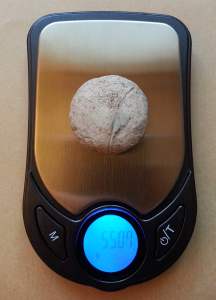The question of oral history, and how effective and accurate it is, interests me greatly.
Anyone who has gone into their family history will find that accounts given by grandparents and other members of the oldest generation of the family turn out to be almost invariably inaccurate, and often woefully so, when tested against the cold hard facts of official records. Older generations, if not genuinely forgetful of details, can be deliberately vague about matters which filled an earlier age with horror (such as illegitimacy) which today are regarded as nothing to get worked up about.
At some stage, any detectorist who has private “permissions” will encounter oral history, whether from what the landowner relates about the history of the land or from what other local people have to say in the pub. The difficulty for the detectorist will be in working out what is reliable and what is not. So far, the owner of my second permission has told me the following:
- During WWII, Italian POWs were used on the land to straighten the course of the stream to relieve flooding;
- In 1940 all the fields bar 1 were down to pasture, and the land was ploughed in its entirety in that year by order of the government;
- It was returned to pasture only around 2003;
- There was a cemetery on the highest part of the land;
- There was once a cottage in the corner of one particular field;
- There was some connection with a monastery.
But which of these can I rely on?
The farmer’s family bought the land in 1937 and took possession of it in 1940 when the sitting tenant left. So items 1 and 2 are either from the farmer’s own memory or what his father told him. He himself took the decision to return the land to pasture in or around 2003. All, I suggest, can be reasonably relied on.
However items 4 – 6 are pieces of information that he has been told at varying dates by local people who may or may not have been passing on genuine and reliable information. Some may be a complete fabrication. Of these three, I suspect item 5 is the most likely to be true, if only because in the days before electricity and piped water cottages could be, and were, built pretty much anywhere. In the 1851 census, for example, some of my own ancestors were enumerated living in a “cottage in the field”. It’s possible that footings or foundations of the cottage on this farm may still have been visible within living memory, but equally any building on the spot may simply have been a shed or barn.
One fairly scholarly folklorist’s estimate that I once read set a limit on the reliability of oral history as “living memory of living memory”. In other words, think of yourself today. You are told X by someone of, say, 90 years old, who was told the same unformation when he or she was a child of 10 by someone who was also 90 at the time he or she gave the information.
- Informant aged 90 in 2013 – born 1923.
- That person told in 1933 by someone aged 90.
- Older informant born c1843.
- Older informant probably told the information c1853, allowing for him or her to be old enough to understand and remember what they were told.
In other words, reasonably reliable oral history available today probably dates from no later than the earlier years of Victoria’s reign. Earlier testimony is not entirely worthless, but it becomes increasingly unreliable as it recedes into the past. In oral history the key evidence is, “I personally witnessed X”. Beyond that, it’s “I was told by the man who personally witnessed X”, but beyond that we are into “friend of a friend” territory, rather like urban legends.

